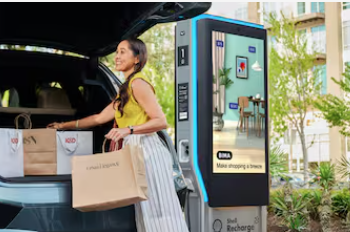When Volta launched its electric vehicle charging stations with integrated digital advertising screens in 2017, it was well ahead of the curve. Within a few years, retail media networks would see explosive growth, expanding from traditional grocery and e-commerce platforms to gas stations, gyms, rideshare vehicles, and virtually every consumer touchpoint imaginable.
But Shell, which acquired Volta in 2023, recently decided to pull the plug on Volta’s EV-digital ad network which was operating at more than 2,000 charging points across the U.S. Once an innovative red-hot startup valued at $2 billion, by late 2024 the business was reportedly losing Shell a cool $140 million annually.
For stakeholders and analysts in the retail media ecosystem, it raises the question: Where did Volta go wrong? Was it a victim of flawed design, an overambitious rush to scale nationwide, a retail media landscape overcrowded with competitors—or, maybe, all of the above?
“Volta shows not every experiment succeeds—but even failures point to what works. Innovation needs a clear-eyed vision, paired with testing, great design, and a sound business model.” —Jonathan Rosen, STRATACACHE Global EVP, Retail Media Strategy
Volta’s sudden demise is more than just a cautionary tale. It reveals valuable lessons for the retail media industry about how to build sustainable digital advertising models. These lessons are especially relevant at a time when brands are struggling to identify which of the countless emerging retail media networks will deliver lasting value.
Lesson #1: Design for Real-World Behavior
Volta’s concept seemed logical on paper: Electric vehicles are on the horizon, and their drivers will need to spend time at charging stations. Combining EV charging infrastructure with digital advertising screens would create added revenue streams.
Taking a cue from screen-enhanced gas pumps, Volta embedded two small screens at each charging port. But in doing so, it failed to understand authentic consumer behavior, rather than assumed engagement.
“This idea that somehow those little screens were somehow going to reach people with advertising, that that was going to be the thing that they’d be looking at while they were charging, was misguided” says Jonathan Rosen, STRATACACHE’s Global EVP of Retail Media Strategy. “It’s not a one-to-one environment with regards to interaction with that screen other than to get plugged in and get going.”
The core conceptual disconnect was context. Unlike gas stations where drivers must actively monitor fuel levels and costs at the pump, EV charging requires minimal attention once the car is plugged in. Users are more likely to check their phones, walk away, or engage in other activities than watching ads.
Lesson #2: Validate Through Testing
Volta’s failed proof-of-concept highlights the necessity of comprehensive testing phases—an approach that leading retail media networks increasingly prioritize. Rather than scaling quickly across thousands of locations, successful networks use pilot programs to understand engagement patterns and advertiser demand before major investments.
“Put testing in place before you launch wide to see how people are behaving, to see what the impressions are, what the activations are, what the engagement level is, and then optimize afterwards while you’re still in the testing mode,” Jonathan advises.
For Volta, rigorous testing may well have unlocked a smarter, group-focused EV-digital advertising strategy rather than individual screens at each charging port. “For charging stations to become an advertising platform, a better design might be a group of them set in a circle around a large circular billboard, whereby you’d run something that was one to many, not one to one,” Jonathan suggests.
Lesson #3: Build a Sustainable Model
Beyond the need for real-world behavioral insights, Volta’s experience demonstrates the importance of creating economically sustainable advertising models. Installing and maintaining screens at every charging station put Volta on the hook for hefty capital expenses. To justify the high price tag, it needed to engage in careful revenue modeling.
“If they had done that correctly, they’d have seen that the revenue associated with this advertising never would have justified the capital expenditure for the screens,” Jonathan explains. “While the model doesn’t quite make sense on many levels, this would have been apparent from Day One.”
It’s an invaluable lesson for retail media networks relying on physical infrastructure during this current growth phase. The most successful networks will balance hardware investment with realistic revenue projections and sustainable operational costs—turning initial expenses into long-term profitability.
For all its missteps, Volta was a pioneer, identifying the potential for EV charging stations as digital advertising platforms. Rather than viewing its collapse as a one-off failure, the retail media industry can use these lessons to build stronger, more sustainable networks. Gleaning insights about the need for customer-centric design, robust testing, and strategic revenue modeling could make all the difference between the success or failure of the next innovative retail media network model.













